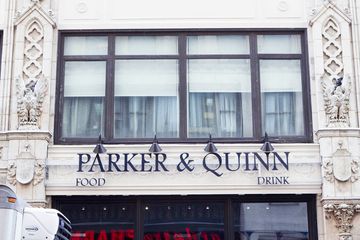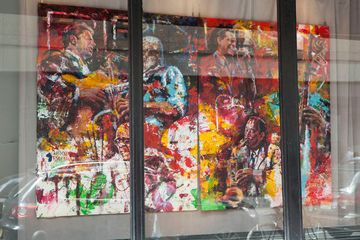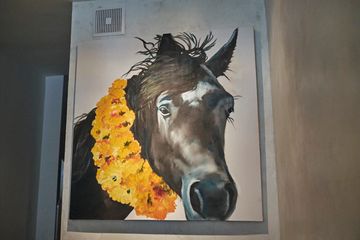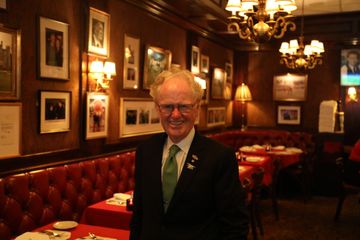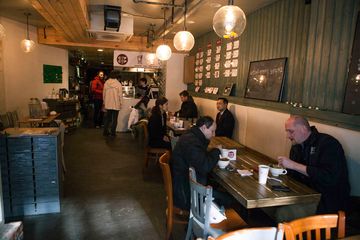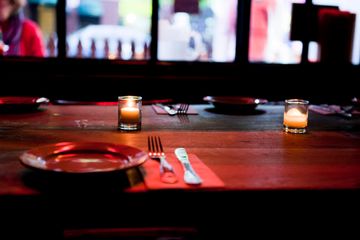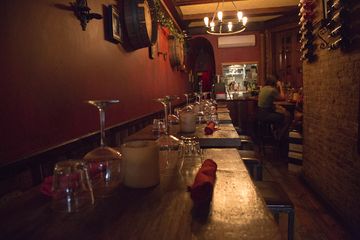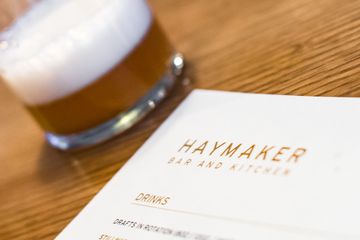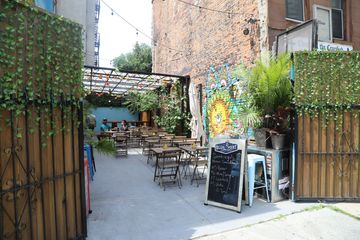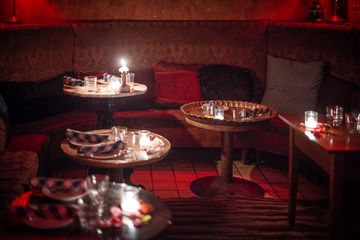As we approached Haymaker Bar, Olivia, a member of the Sideways team, mentioned that she often finds herself around Penn Station with time to kill, but nowhere to kill it. She does not know where to go, besides the chain stores and sports bars that populate the area. Her eyes lit up when we walked into Haymaker, a hip bar with an individual spirit, where the emphasis is not placed on sporting events, but rather the large selection of drinks and good food. The space emanated a sense of rustic hospitality and old-world charm, without seeming in the least old-fashioned. There we met Tristan Colegrove, the bar manager, and David Smith, the owner. Tristan showed us a menu, telling us that instead of using a chalkboard, he uses a clever stamping system on the menu to show the “constantly rotating” beers. He was incredibly enthusiastic about Haymaker, which had only opened a few weeks prior to our visit in the fall of 2015. Tristan immediately began pouring samples. He started with a cider and mentioned a tasting that was slated for that evening with Kyle Sherrer from Millstone Cellars. We found the most interesting to be the Millstone Bonfire Cyser, where cider, mead, and smoked fish peppers blended together into a perfectly balanced spicy-sweet combination. After being introduced to some interesting ciders, Tristan moved on to beer. Olivia and Tom eagerly tried Hop Showers from Other Half Brewing Co. in Brooklyn, which, true to the name, was hoppy and refreshing (“I try to bring in guys that are local, ” Tristan said). That was followed by a sour from Crooked Stave, based in Denver, and Olivia’s favorite, the Kent Falls Shower Beer, with hints of lime, coriander, and sea salt. Tom’s favorite, the “Bomb! ” from Prairie, was brewed with chili peppers, chocolate, and espresso beans. The beers come in a variety of sizes, including eight-ounce glasses that allow people to try more and still remain, in Tristan’s words, "productive at the office after lunch. ”As we sipped on the different drinks, David spoke about how the restaurant was formed. Originally from Northern Ireland, he moved to New York in 2006, where his career in the bar world started to kick off. He and his current business partner, Jeff Anszulewicz, met while working at Dempsey’s in the East Village. They wanted to open a bar/restaurant in an up-and-coming neighborhood. They looked in Brooklyn, but could not find exactly what they wanted. When the Haymaker’s current home became available, they grabbed it. Even though it is Manhattan, David and Jeff recognized it as a neighborhood that needed a bar with their vision. They wanted to be certain that the quality of the food matched the caliber of the drink, so they brought in Jim Takacs as executive chef and Tristan to run the bar. While chatting, Tristan brought out some of Haymaker’s food specialties for us to try, and as we were sitting at the bar, a shipment arrived. Tristan turned his attention to the box and we were able to witness the sight of him opening the new case of beer. It was like watching a child on Christmas morning. We happily continued to snack on the creamy orange pimento cheese with crackers and fresh cut up veggies. “The wings people go crazy for, ” David announced, as he put the plate down. Olivia and Tom wholeheartedly agreed, as did my husband and friends when we stopped in a few days later. I was quite pleased with the cabbage salad which was light, crisp and colorful. Flavor is king at Haymaker, and David says that a devoted core of regulars has already started forming. People come by for a variety of reasons, whether it is to take advantage of $2 off select wine, beer, and house drinks during Happy Hour from 4-7, to grab a light lunch with coworkers, or because they are a “beer nerd” and treat Haymaker as a destination bar. The crew is eagerly anticipating the completion of the Hudson Yards project, as they know they are in a perfect location to attract this new clientele.

